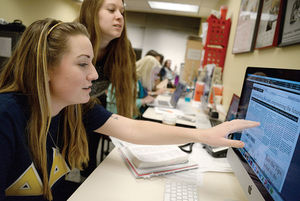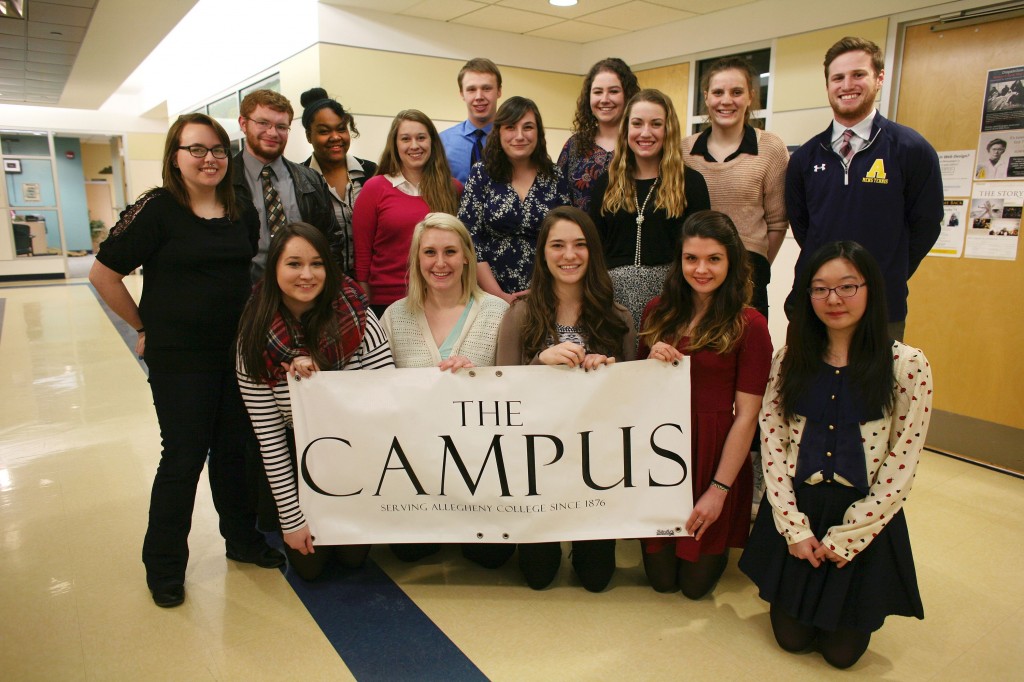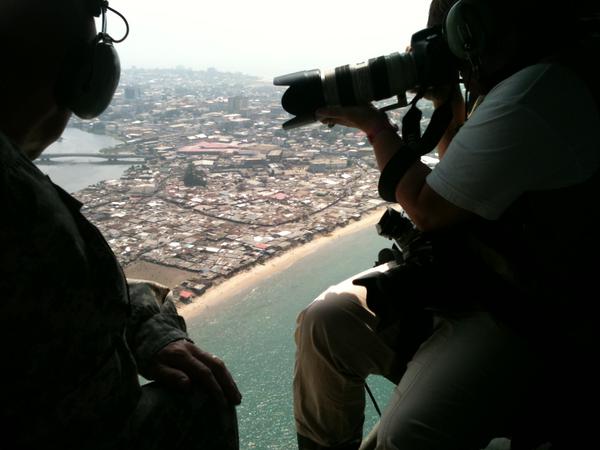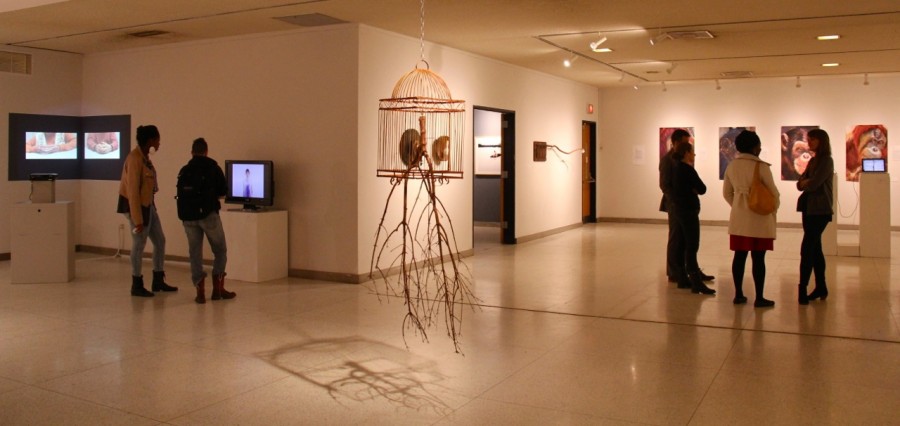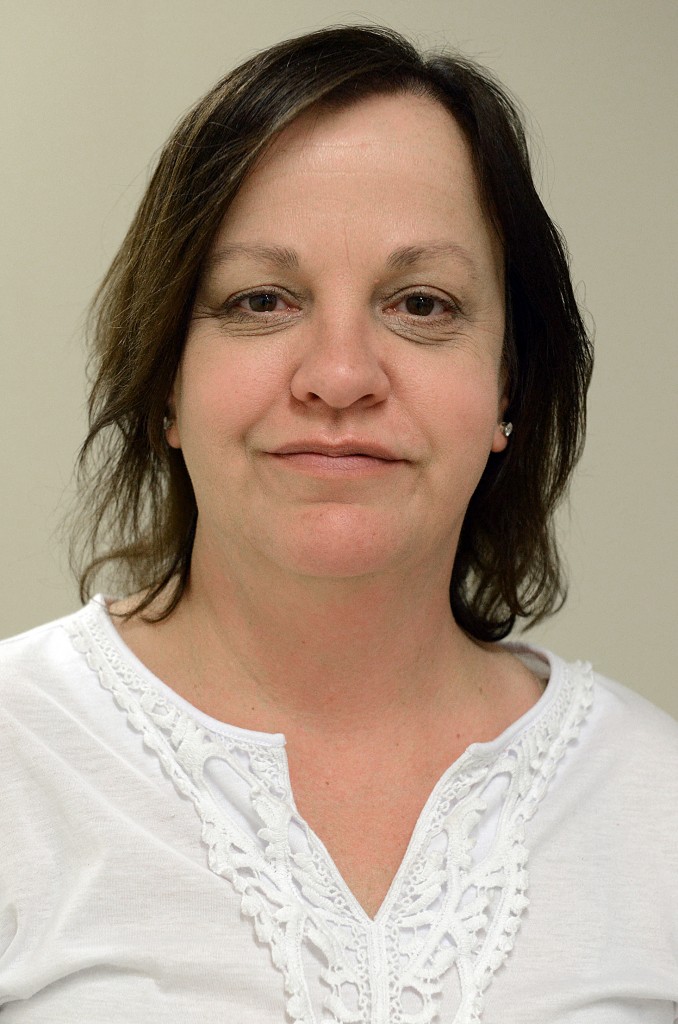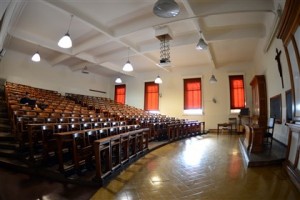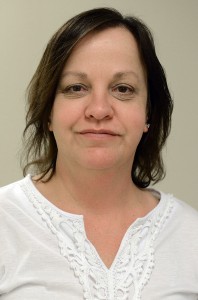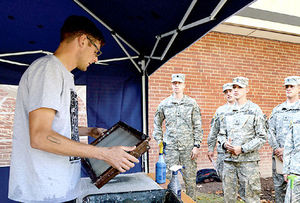
By Earl Corp/MEADVILLE TRIBUNE
When Nathan Lewis came back from Iraq in 2004, he noticed things were different for him.
“You go to war, (and) you come back changed,” Lewis said.
Lewis didn’t let the change overcome him in a negative way. While he was a student at State University of New York at Potsdam, he became involved with the Iraq Veterans Against the War (IVAW), an advocacy group of active-duty U.S. military personnel, Iraq War veterans, Afghanistan War veterans and other veterans who have served since the Sept. 11, 2001, attacks who were opposed to U.S. military in Iraq from 2003-11. On the weekends, the group came together and cut up uniforms to turn into paper for artwork and writing projects. It became a therapeutic outlet for Lewis and his group.
This week, Lewis has shared the paper making process with Allegheny College students as part of Combat Paper: Words Made Flesh. This week-long program is geared toward veterans issues, including art, dance, lectures and panels on a broad number of subjects such as psychology, returning home and military/civilian divide.
The combat paper making process may sound complex and timely, but it is for the most part unchanged since the paper making process began in China in 105 A.D.
Uniforms are cut into postage stamp-sized pieces, then moved into a beater. The beater is a trough filled with water which will turn the cloth pieces into pulp. The only change to the original process since 105 A.D. is Lewis has added a small electric motor to the beater.
The pulp is then moved to a tray, where a frame is dipped into it and sifted, similar to panning for gold. Once a layer of the pulp is gathered, the frame is removed, the water is drained and the paper is pulled off into a sheet onto a press. Once pressed, the sheet of paper is stuck to glass to dry into a sheet of usable paper.
Once the paper is dry, veterans, Allegheny College students and members of the community draw pictures, write poems or provide other artistic endeavors on the recycled uniforms. Lewis said paper making has been picked up as a therapeutic tool by military hospitals and the United Service Organization, a nonprofit organization also known as USO that provides programs, services and live entertainment to U.S. troops and their families.
“It helps vets to tell their story,” Lewis said. “They go through this intense experience (war), and it helps to listen.
“We’re not trained psychologists, we’re just guys who make paper.”
The paper making process ended Thursday, but veterans and community members are invited to design artwork today from 10 a.m. to 4 p.m. at the Bowman-Penelec-Megahan Art Gallery inside the college’s Campus Center.
Allegheny College art professor Steve Prince was instrumental in bringing Lewis to campus for the week. Prince called Drew Cameron in California, director of the national Combat Paper Project, to schedule a workshop, and in turn was put in touch with Lewis, who is one of the project’s paper makers on the East Coast.
Prince said the week is an interdisciplinary approach with the art, dance and panels. The big question Prince had about veterans when planning the week was, “How do they get reintegrated back into society and how can we help with the process?”
A gallery of combat paper artwork begins on display Saturday through Oct. 28 at the Bowman-Penelec-Megahan Art Gallery. At the gallery opening on Saturday at 5 p.m. at center, there will also be performances by dance and movement studies students, and vocal and music students.
Prince said combat paper was sent to 26 renowned artists with a request to contribute artwork for the gallery. The pieces will be displayed prominently along with pieces done this week by students and community members.
Allegheny College senior Sam Stephenson is an English major from Portland, Ore., who plans to enter the Marine Corps as an officer following graduation. Stephenson was at the workshop as a member of one of Cheryl Hatch’s journalism classes. Stephenson said he could see where the combat paper would be useful to veterans in the healing process.
“(They are taking) a tool of the military and bridge that gap between military and civilian and make art,” Stephenson said.
“I like the way they’re taking something military and turning it from memorabilia and making something productive,” said sophomore Meghan Wilby, another member of one of Hatch’s classes, who is also participating in the workshop.
Colorado’s Kali Albern, an Allegheny art student, said she has made paper before but never from uniforms. But she enjoys the concept.
“Although it has symbology, because we don’t know what it will be used for, it has its original purpose and can now be used for beauty,” Albern said.
Though Lewis said he has gotten as much therapeutic benefits from making combat paper as he possibly could, he enjoys sharing the experience with students and other veterans and performs four workshops per year.
Source: Academics, Publications & Research
